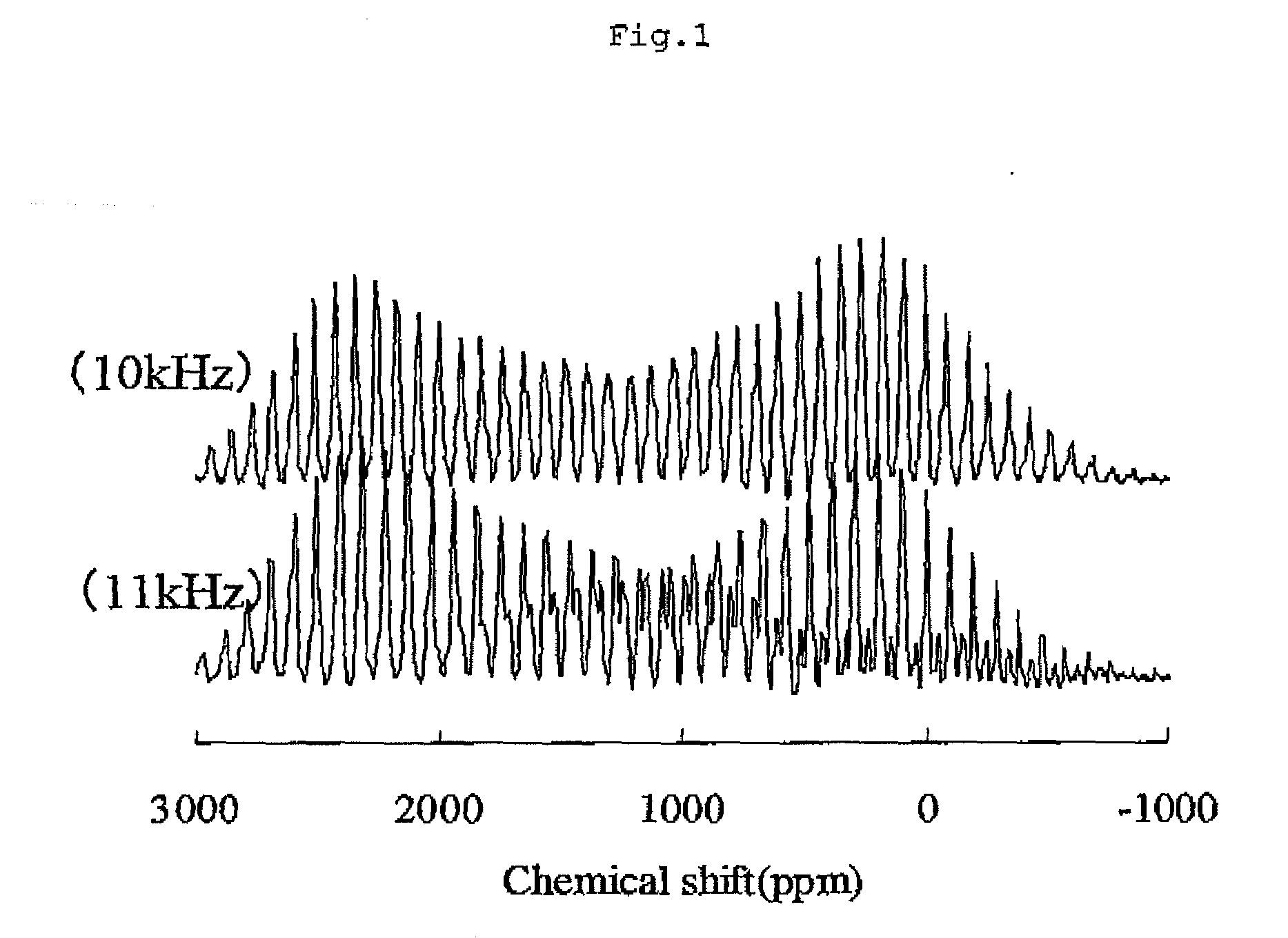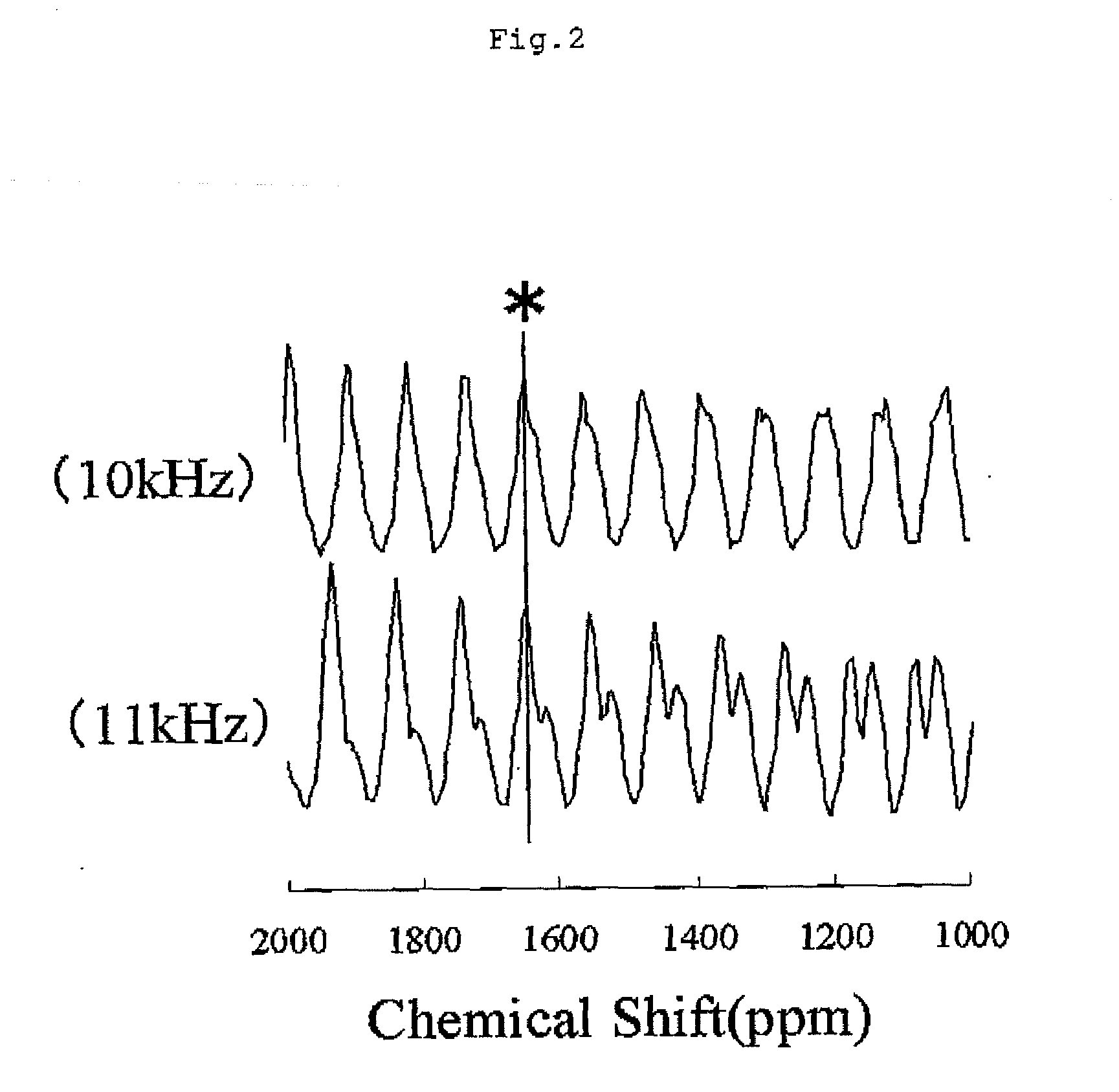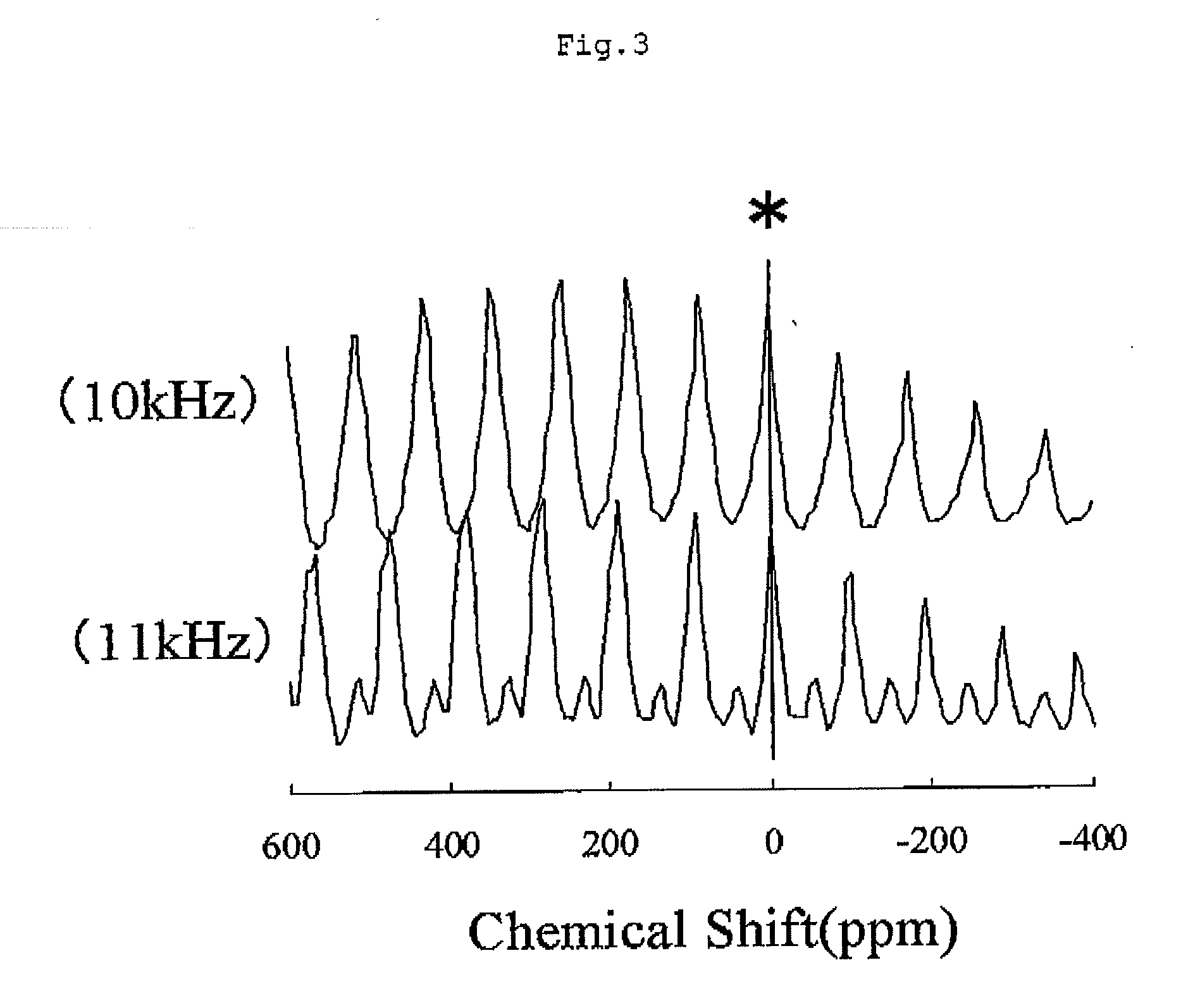Lithium composite metal oxide
a metal oxide and composite technology, applied in the field of lithium composite metal oxide, can solve the problem of insufficient capacity maintaining rate of conventional lithium secondary batteries, and achieve the effect of improving the capacity maintaining ra
- Summary
- Abstract
- Description
- Claims
- Application Information
AI Technical Summary
Benefits of technology
Problems solved by technology
Method used
Image
Examples
example 1
1. Production of Lithium Composite Metal Oxide
[0088]In a titanium beaker, 50 g of lithium hydroxide monohydrate, 500 ml of distilled water and 200 ml of ethanol were stirred, the lithium hydroxide monohydrate was completely dissolved, and an aqueous lithium hydroxide solution was prepared. The titanium beaker with the aqueous lithium hydroxide solution was put gently in a low temperature thermostat and kept at −10° C. In a glass beaker, 20.20 g of nickel(II) chloride hexahydrate, 20.78 g of manganese(II) chloride tetrahydrate, 14.55 g of cobalt(II) nitrate hexahydrate (the molar ratio of Ni:Mn:Co is 0.35:0.44:0.21) and 500 ml of distilled water were stirred, the above metal salts of the nickel(II) chloride hexahydrate, the manganese(II) chloride tetrahydrate and the cobalt(II) nitrate hexahydrate were completely dissolved, and an aqueous nickel-manganese-cobalt solution was obtained. The aqueous solution was added dropwise to the lithium hydroxide aqueous solution kept at −10° C. to...
example 2
1. Production of Lithium Composite Metal Oxide
[0096]Power A2 was obtained as in Example 1 with the exception that 23.17 g of nickel(II) chloride hexahydrate, 23.25 g of manganese(II) chloride tetrahydrate and 7.28 g of cobalt(II) nitrate hexahydrate were used and that the molar ratio of Ni:Mn:Co was 0.41:0.49:0.10.
[0097]The composition of powder A2 was analyzed, with the molar ratio of Li:Ni:Mn:Co being 1.34:0.41:0.49:0.10. In addition, the BET specific surface area of A2 was 6.4 m2 / g.
[0098]In the solid-state nuclear magnetic resonance spectrum of 7Li of powder A2, Signal A with the central peak of a chemical shift of −0.8 ppm and Signal B with the central peak of a chemical shift of +1545 ppm were detected. The largest peak of Signal A was at a chemical shift of −0.8 ppm, and the largest peak of Signal B was detected at a chemical shift of +2413 ppm. Additionally, when the largest peak intensity of the lithium hydroxide monohydrate was set to be 100, the largest peak intensity of S...
example 3
1. Production of Lithium Composite Metal Oxide
[0100]Powder A3 was obtained as in Example 1 with the exception that no cobalt(II) nitrate hexahydrate was used that 26.15 g of nickel(II) chloride hexahydrate and 25.73 g of manganese(II) chloride tetrahydrate were used and that the molar ratio of Ni:Mn was 0.46:0.54.
[0101]The composition of powder A3 was analyzed, with the molar ratio of Li:Ni:Mn being 1.32:0.46:0.54. In addition, the BET specific surface area of A3 was 5.7 m2 / g.
[0102]In the solid-state nuclear magnetic resonance spectrum of 7Li of powder A3, Signal A with the central peak of a chemical shift of −2 ppm and Signal B with the central peak of a chemical shift of +1798 ppm were detected. The largest peak of Signal A was at a chemical shift of −2 ppm, and the largest peak of Signal B was detected at a chemical shift of +2401 ppm. Additionally, when the largest peak intensity of the lithium hydroxide monohydrate was set to be 100, the largest peak intensity of Signal A was 6...
PUM
| Property | Measurement | Unit |
|---|---|---|
| chemical shift | aaaaa | aaaaa |
| chemical shift | aaaaa | aaaaa |
| chemical shift | aaaaa | aaaaa |
Abstract
Description
Claims
Application Information
 Login to View More
Login to View More - R&D
- Intellectual Property
- Life Sciences
- Materials
- Tech Scout
- Unparalleled Data Quality
- Higher Quality Content
- 60% Fewer Hallucinations
Browse by: Latest US Patents, China's latest patents, Technical Efficacy Thesaurus, Application Domain, Technology Topic, Popular Technical Reports.
© 2025 PatSnap. All rights reserved.Legal|Privacy policy|Modern Slavery Act Transparency Statement|Sitemap|About US| Contact US: help@patsnap.com



